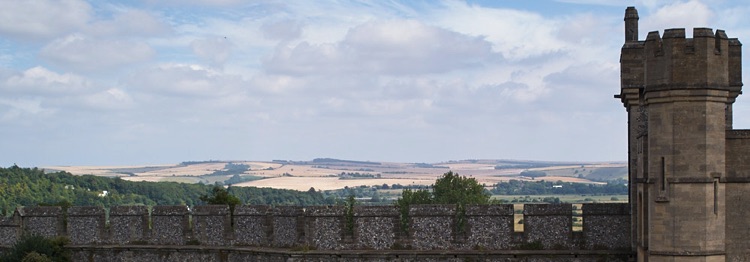0450
Year
The Saxon Invasion of Sussex
Event
450 Hengest and Horsa in Kent
British king Vortigern granted Saxon raiders Hengest and his brother Horsa the Isle of Thanet in Kent. In exchange, the two brothers were to protect England from the Picts. Hengest and Horsa repelled the Picts and returned to the Isle of Thanet. Vortigern married Hengest’s daughter and granted Kent to the Saxons. However as their number increased, the Saxons wanted more land and further conflict erupted. Vortigern’s son Vortimer fought the Saxons and enjoyed some initial success driving the Saxons back to the Isle of Thanet. However, he was eventually defeated by Hengest and Horsa at Aylesford, Kent in 455. Horsa was killed in the battle and and Hengest offered peace to Vortigern. If we are to believe Gildas, this was just a ruse and when the British leaders were assembled, Hengest had them all murdered except Vortigern, who was held for ransom. Some Britons fought on, but in 457 Hengest and his son Æsc comprehensively defeated the Britons at Crayford and Kent was abandoned to the Saxons. In exchange for his life, Vortigern granted more land to the Saxons, establishing kingdoms for the East Saxons, Middle Saxons and South Saxons. These kingdons became the basis for the modern counties of Essex, Middlesex and Sussex.
473 Ælle, First King of Sussex
Analysis by M.G. Welch of the distribution of early Saxon settlements in Sussex appears to show them congregated between the river Ouse and the river Cuckmere. It may be inferred that this was the land originally granted to the South Saxons by Vortigern. In 485 Ælle fought against the Britons near the margin of Mearcred's Burn. This site has not been definitively identified as yet, but one translation of the name could be "treaty river". Welch speculates that this might be the river Ouse, the western boundry of Ælle's land grant from Vortigern. In 473 Ælle and sons Cymen, Wlencing and Cissa landed at Selsey which they named Cymen's shore, expanding South Saxon territory west. They fought the Britons and drove them into the weald.
491 The Siege of Pevensey
In 491 Ælle and Cissa landed at Anderitum (Pevensey) and lay siege to the Roman fort, expanding the eastern boundary of his South Saxon kingdom. The Anglo-Saxon chronicle reports that there were no survivors amongst the Britons. However, despite multiple archeological surveys of the site, no evidence of a pitch battle has been found. It may be that the fort was able to offer little resistance. I would speculate that the killing of all the forts occupants, could have been revenge for some injury inflicted on Ælle, possibly the death of one of his sons at the hands of the Britons.
495 The Battle of Badon Hill
Having conquered Sussex, Ælle left his youngest son Cissa to govern Sussex and pressed further west. The British had rallied under a leader named by Gildas as Ambrosius, an anglo-roman who had remained in Britain after the Romans had abandoned the island. (Ambrosius is thought by some to be the basis for the King Arthur legends.) Ambrosius reportedly fought and defeated the Saxons twelve times, with the final victory at Badon Hill.
Badon Hill was to be the last major British victory over the Saxons. It was fought at an unknown site in the southwest of England, but possibly near Bath. Historian Bede refers to Ælle as the first saxon over-king and it is possible that Ælle was the defeated Saxon leader at that battle. There is little subsequent historical reference to Ælle or any other major Saxon leaders from Sussex. This would be consistent with Ælle and his chief lieutenants meeting their end in that battle.
Aftermath of the Battle
There is no further record of the British trying to drive the Saxons back from the British shores. While Badon Hill was recorded a British victory, it may be that there were high losses on both sides and the British did not have the forces or the appetite to wholly drive the Saxons from Britain. It is quite possible that a truce between the British and the Saxons who were already settled was agreed, allowing Cissa to continue is reign as King of Sussex.

Sussex Timeline


